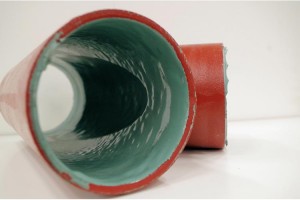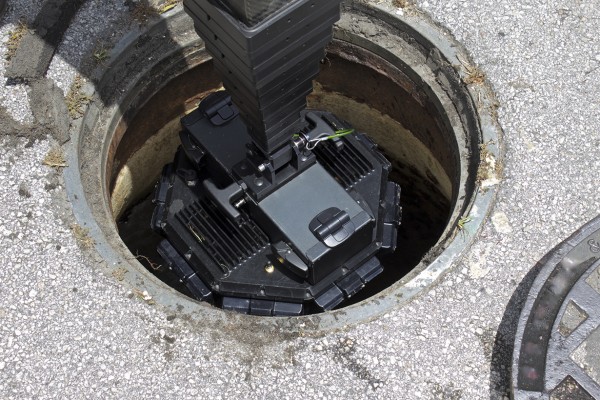Storm Sewer Pipelining
Most professionals and a great many non-professionals as well, are now aware of the usefulness of cured-in-place pipe-within-a-pipe (CIPP) technology as an excellent approach to restoring or rehabilitating damaged storm sewer lines, as well as water lines and culverts. The US Pipe Lining method for repairing storm sewer pipelining is non-invasive, which prevents restoration from developing into extremely costly and lengthy ventures.

The US Pipelining CIPP system is designed for stormwater pipeline restoration and can be used to structurally rehabilitate culverts and storm sewers. US Pipelining uses noninvasive restorative methods to install a jointless, seamless and standalone cured-in-place-pipe-within-a-pipe. The US Pipelining CIPP system is capable of restoring pipelines ranging from 4 to 120 inches in diameter and able to negotiate 45- and 90-degree bends.
Benefits of US Pipelining CIPP Restoration:
Infiltration/Exfiltration & Erosion Reduction: US Pipelining CIPP can eliminate infiltration/exfiltration and prevent erosion caused by leakage from your system.
Structural Integrity: US Pipelining CIPP system restores structural integrity to weakened or failed storm sewer pipes and culverts. Tested to ASTM F1216 Standards, US Pipelining CIPP is a structural product with a 50 to 100-year design life.
Increased Flow Capacity: US Pipelining CIPP provides the least cross-sectional reduction of all methods used to rehabilitate pipes. Despite the minimal cross-sectional reduction, the smooth, jointless interior of our product typically improves flow capacity. There are no joints that can separate over time. The smooth interior also provides excellent abrasion resistance.
Affordability: The US Pipelining CIPP process is typically less expensive than conventional methods of storm sewer repair and/or replacement. When you consider the lost business revenues, traffic congestion and social costs associated with other methods, your savings are immeasurable.
Installation Flexibility: US Pipelining offers flexibility in both the method of installation and the cure process. US Pipelining CIPP can be pulled into place or inverted with either air or water. The cure can be done with steam or hot water. All processes are consistent with nationally recognized standards and all materials are manufactured under ISO-certified quality control programs.
When Should I consider CIPP for my project?
Since each job is unique, we will apply the most cost-effective, technically-optimal solution to solve your pipeline rehabilitation problem. However, the lack of disruption to existing infrastructure, the speed with which projects can be executed and the structural nature of CIPP make it an ideal solution for many situations including municipalities, commercial and industrial structures.

The Use of Video Inspection
In years past, it was necessary to take an educated guess about what might be clogging up your sewer or water lines, based on the observable symptoms and on what years of experience might tell you. With the arrival of high-tech video equipment, this kind of guesswork can be eliminated from storm sewer pipelining, and you can zero right in on the problem to quickly and accurately identify what might be happening in your storm sewer pipelining.
US Pipelining will often recommend conducting a video inspection of your storm sewer or your water lines, so you can zero in on the problem. Knowing exactly where a fix is needed can save thousands of dollars in project costs. An inspection of this nature will not only tell you where the problem is, but it will also identify the true extent of the problem, resulting in fewer surprises mid-project.
When performing a commercial video pipe inspection, a precision camera will be run through the portion of a line to determine exactly where and how badly your pipes have been damaged. If the obstruction is due to clogging, that will also be revealed, and in either case, you will have a clear idea on how to proceed to resolve the issue.
The Economics of CIPP
The estimated savings of restoring storm sewer pipe using the US Pipelining CIPP methods are between 50% and 75%. It’s even more economical when you consider that CIPP is a non-invasive process which requires no massive cleanup or rehabilitation effort after the operation has been concluded.
CIPP is also one of the safest, most durable and reliable methods of storm sewer restoration. Time to replacement is also advantageous with most CIPP storm sewer pipes lasting somewhere between 50 and 100 years.
Traffic Flow with CIPP
Conventional methods used for storm sewer pipelining will often days to implement, depending on the extent of the problem, and the exact location of the issue. CIPP on the other hand can often be installed in a matter of hours, with only the curing stage left to accomplish. This makes scheduling around peak commuter hours, inclement weather, or seasonal changes much easier.
Because there’s no invasive excavation process, traffic in the area where you’re conducting storm sewer pipelining restoration doesn’t have to be disrupted or re-routed. This is a major benefit, because traffic detours can delay projects, be inconvenient for drivers, lead to traffic snarls and even accidents.
Our Approach
Our approach to storm sewer pipelining calls for the use of just two main materials, a dry tube and some specialized resins. The dry tube must be cut to a desired length and then tested to confirm that it will be able to withstand the conditions which exist within the host pipe. This dry tube or tubes, must then be coated with polyethylene or polypropylene, because these will provide the necessary protection against hydrolysis and any chemicals which may be present.
This tube is then ready to be stretched as needed to conform to the length of the host pipe, and it will be capable of handling virtually any kind of condition which might arise in the ground, while maintaining its structural integrity.
CIPP can conform to any shape of pipe; round, oval, or other pipe shape. CIPP will provide an excellent interior seal, and will prevent any kind of infiltration into the storm sewer pipelining system.
Choosing a CIPP Contractor
Once you have decided on using a CIPP approach, the next step in your storm sewer restoration project is finding the contractor who can implement a CIPP solution effectively and economically. Project can encounter hurdles. Having a partner with the ability to problem solve based on exposure hundreds of projects is a valuable asset. Look for experience, a project portfolio that shows an ability to successfully complete a wide range of projects, and projects like yours.